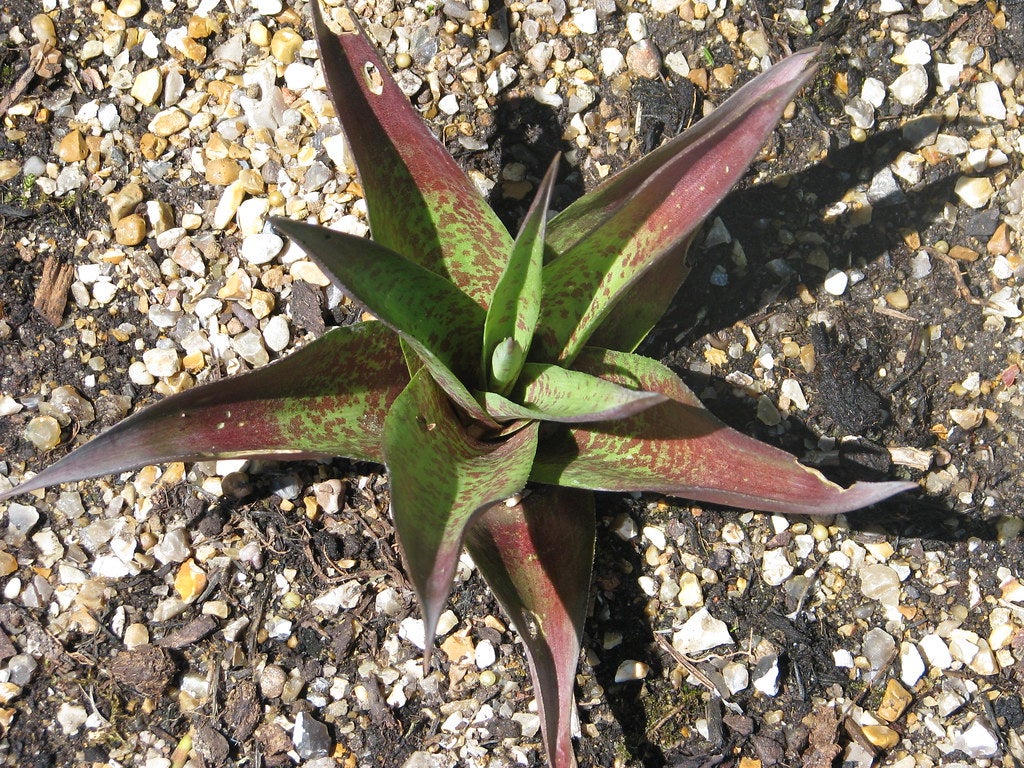Manfreda Plant Info – Learn About Manfreda Succulents


Manfreda is a member of a group of approximately 28 species and is also in the asparagus family. Manfreda succulents are native to the southwestern U.S., Mexico, and Central America. These little plants prefer arid, drought riddled locations with low nutrients and plenty of sun. They are easy to grow and thrive on neglect. Read on for further Manfreda plant info.
Manfreda Plant Info
Succulent lovers will adore Manfreda plants. They have an interesting form and unique foliage that makes for a great houseplant or outdoor plant in hot, dry areas. Some of the species even have quite spectacular flowers. Good drainage is essential for these succulents, but minimal care is required.
Some growers refer to these plants as false agave due to their rosette form and thick, succulent leaves with gentle serration along the edges, which do, in fact, resemble agave plants. The leaves sprout from a short, bulbous stem and may be adorned with attractive mottling in various colors. The flowers appear on tall stalks and are usually tubular in hues of white, green, yellow, and bronzy-brown. The stamens are erect and showy. Some types of Manfreda even boast delicately scented blooms.
Manfreda plants hybridize easily and the flat black seeds produced after flowering germinate readily. You may find some interesting forms by growing seed from one species that was exposed to another.
Types of Manfreda
There are over two dozen types of Manfreda succulents in the wild, but not all are available to growers. Many can get up to 4 feet (1 m.) wide with flower scapes of 1 foot (31 cm.) in height. Leaves may be rigid and slightly arching to almost curled and ruffled. Some excellent hybrids available are:
- Mint Chocolate Chip (Manfreda undulata) – Minty green slender leaves decorated with chocolate hued mottling.
- Longflower Tuberose (Manfreda longiflora) – Grayish green foliage with tall flower spikes of white which turn pink as the day ends and emerge red in the morning. A sweet spicy scent is emitted.
- False Aloe (Manfreda virginica) – Native to the eastern United States, the flowers can grow on 7 foot (2 m.) stalks. Small, not terribly showy flowers but heavily scented.
- Mottled Tuberose (Manfreda variegata) – Short flower stalks but, as the name suggests, beautifully variegated coloring on the foliage.
- Texas Tuberose (Manfreda maculosa) – Low growing ground hugger with leaves bearing reddish purple to dark bronzy-brown streaks.
- Cherry Chocolate Chip (Manfreda undulata) – A small plant with distinctly ruffled leaves that sport bright cherry red spots along with brownish streaking.
There are many other hybrids of this plant because it is easy to cross, and growers have fun creating new forms. Some wild plants are endangered, so do not try to harvest any. Instead, use reputable growers to source these amazing plants.
Sign up for the Gardening Know How newsletter today and receive a free copy of our e-book "How to Grow Delicious Tomatoes".

Bonnie Grant is a professional landscaper with a Certification in Urban Gardening. She has been gardening and writing for 15 years. A former professional chef, she has a passion for edible landscaping.